O, Wow, The Whole Thing
O, Wow
The satirical novel O, Wow — by yours truly — is set in a near future. At the outset, the wounded psyche of its lead character, a comic named Peter Dooley, is overwhelmed by an experimental technology.
Originally developed for battlefield communications, the nanobiotic neural “boost” had been repurposed — too hastily, it seems — to serve public relations efforts during a national emergency. Dooley and his former partner, both imbued with the enhanced telemedia system, which links psyches via maxnet wifi, became able to work in vastly accelerated and exquisitely synchronized production of mass-persuasion spots: live, ad hoc, online, with real-time response to ongoing polling data.
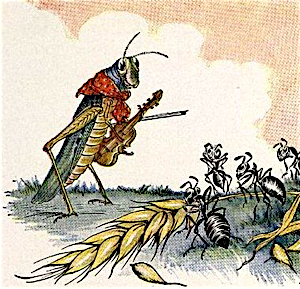
Displacing Dooley’s failing ego, a quixotic persona that calls itself Grasshopper emerges from his tech-boosted, ever-online and server-enhanced psychic struggles. Grasshopper’s manic energies illuminate via spontaneous tech-driven video holograms, often with cinematic surround-sound effects. Comic imagery featuring Chaplin, Keaton, Keystone Kops, as well as extravagant cartoon characters, seem always to swirl about him. They enliven and challenge anxious lives of desperate fellow travelers. Grasshopper’s notoriety soon attracts media attention. His ascendance amid national travails is portrayed as some sort of bizarre, yet miraculously healing, messiah.
Grasshopper personally disparages, but tolerates, most fellow travellers as “Ants, — phooey!” Nevertheless, he fascinates and draws them into unlikely escapades where some become infected with his auto-sustaining, ever renewing, nanobiotech. They become the core of a Grasshopper band, at the center of a traveling horde of displaced evacuees from Gotham Seaboard.
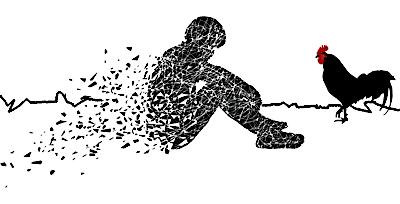
Following an hallucinatory encounter with a ditch bank and a rooster, Dooley’s native persona slowly recovers itself within lingering rhythms of Grasshopper’s on-going “hoppening”. A hyperlinked, nomadic and eerily telepathic commune manifests about him in a small band of equally tech-infected companions. Like him, they seem drawn to collective perches up in trees where they gather about their Gadfly of Antdom to exult in a gathering of effusive energies. Conjoined imaginal experience sighs in a cosmos-embracing sentiment: “One world, one way.”
While its intended meaning is not spelled out in the novel — despite the title being an acronym of that very phrase — I have come to regard it as the Grasshopper band’s enthused summation of their own mutual awareness. Individually, they have arrived at a momentary pinnacle of common evolutional prospect, where they exult in panoramic elaboration of possibilities among all living beings.
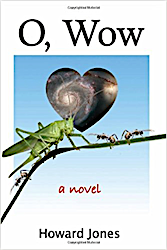
The Whole Thing
The late modern era, at C4, builds a unique common sense notion of reality rooted in many personal experiences socially expressed through a rich heritage of media technologies. Gathering psychic and cultural constituents from a range of precedent-setting forebears, C4 empirical reality manifests out of legacies of earlier social and cultural elaborations of pragmatic paradigm, or, notions of how the world works. Such common notions — pragmatic paradigms — emerge from social communication, enabled and constrained by available methods of interaction, especially the unique qualities of specific media technologies. Note that C4, an exemplar of print media, does not simply displace earlier modes. Rather, memes of earlier realities are reinterpreted and incorporated into the dominant mode. Those precedent cultural patterns are adapted and reworked to suit the modern context. It reorganizes their legacies within its more complex dynamic. (See the table Evolution of Cultural Orders, below.)
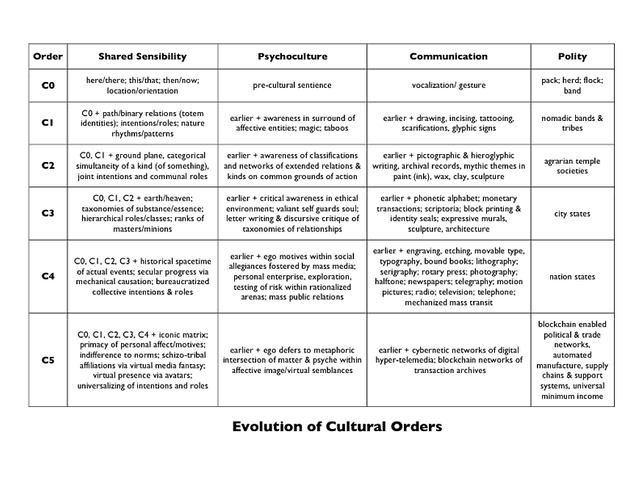
Consequent elaborations of C4 accomplishments now open into iconic dawn, at C5, where visual immediacy enabled by digital processing occasions a spontaneity of responsiveness that had been impractical in the preceding print-anchored era. The most recently dominating, although not the only, influence of earlier C4 reality might be its celebration of natural cause.
This core idea first flowered in 16th century Europe from where it aggressively spread across the planet. Its empirical root fostered new prospects for communications and transactional technologies that first sprouted and then flourished in commerce among competitive empires. Once novel, even heretically curious, habits of practical thought (in the Middle Ages, for instance, as portrayed in Umberto Eco’s The Name of the Rose) and resultant behaviors now daily motivate and guide personal and collective events around the globe.
But our own time, in the twilight of C4 and just now glimpsing promise of C5, seems transitional, between paradigms. The question that hovers is “Must we yet again endure a night between?”
We are putting aside diminishing returns of C4 reductionist Cartesian mechanisms and their machine-bureaucratic institutions. Burgeoning C5 blockchain ledgers and other responsively automated technologies now promise delegated accords for newer, more organic modes of social and commercial interaction. The older, oh, so recently “modern” ways suddenly seem horrifically unwieldy, inadequate and prone to humany larceny and lust in contrast with automatically elaborated and equitably managed media forms. We foresee prospects of self-organizing interactive virtual realities.
Earlier implementations of social accord have grown unworkable at many levels, especially if one regards harmony and productivity as jointly crucial criteria of cultural wellbeing. As discussed more fully below, and elsewhere in Steemit posts that support an ongoing project, Manifest Orders: Dimensions of Attentiveness, a new organic view beckons.In The Coming Caesars, published in 1957, Amaury de Riencourt argues that C4 Occidental culture, began about 1000 AD. It arose in the wake of C2 Gothic invasions of decadent C3 Hellenistic civilizations. But C4 now seems to be in ebb. If so, then here, sixty years after that publication, we find ourselves at the end of one millennial era and somewhat prior to the next.
Such inter-millennial transitions typically are tumultuous. Confusions become pandemic as familiar patterns no longer are honored or even tolerated. Frustration quickly grows into vengeful bouts of social retribution. Masses of frustrated individuals, disillusioned by diminished opportunity and fearful of “invading aliens”, clamor for a strong champion, a Caesar, as they were called during a similar phase of the ancient Roman era.
Sound familiar? If it does, says de Riencourt, it is because our receding millennium is subject to the same evolutional patterns that shaped the rise of other great cultures: decline, either through stages or gradually, into destabilization that perhaps builds to extremes of civil disorder. Each civilization differed in its own particulars of locales, prospects and forms. But each has proceeded through organically similar phases, from beginning, through middle, to end.
[By the way, be aware that due to lapse of the original copyright, a later interpretation of de Riencourt’s book that claims dual authorship also is available under the identical title. I am not familiar with that derived adaptation; my comments are addressed solely with regard to the original as penned by de Riencourt himself.]
Individual Roots of Group Behaviors
As further considered below, according to William Powers’s Perceptual Control Theory (PCT): people individually behave to bring their perceived circumstances into agreement with their expectations and intentions.
Consideration of individual motives within human society suggests that, among groups, personal behavior is driven in compensation of perceived deficiencies, coupled with eagerness to repay grief in kind and with interest. Such proclivities do not bode well for any civilization within which individual frustrations massively build.
People interact and transact in social groupings. Those whose communication is only spoken or gestured (among subgroups operating at C1 and C2, such as street gangs and the urban and rural impoverished classes) are capable of far less elaborate realization of possibilities than those attained among more media-facilitated individuals. Those who wield books, computers and inter-networked smart phones tend to forget propensities of frustrated ambitions at less complex pragmatic realities.
Where a great mass of a populace is unable to participate in intricate institutions and protocols of social process, threat of mayhem gathers. All such interactions and transactions, both intra- and inter-group, within a society are profoundly shaped by communications and interactive media available to them. (Those who disagree must be prepared to explain the prosecution and outcome of the 2016 US Presidential election without Facebook and Twitter operating across a global Internet.)
Transitions Between Times
Earlier periods between cultural eras typically have fallen into ruinous periods called Dark Ages. Whether our kind, yet again, shall pass through a valley of the shadows of our own animal natures is yet to be seen. And if so, just how savage folks may become shall be determined largely by how they come to regard one another. And how they behave as a result. The possibilities range across a spectrum:
-
ghastly, as imagined in Cormack McCarthy’s novel, The Road,
-
dire, as construed in James Howard Kunstler’s World Made by Hand fiction series, and on his website,
-
manageable, as illuminated by Chris Martenson and Adam Taggart at Peak Prosperity,
-
optimistic, as predicted by Peter Diamandis,
-
enthusiastic, as anticipated by Ray Kurzweil.
Birth of the Machine Age
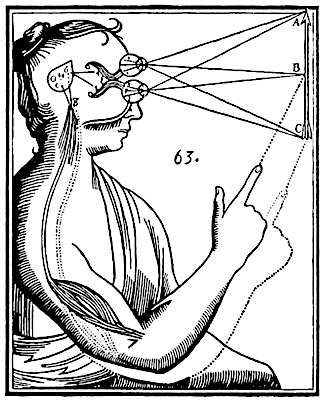
Social Machines Wear Out
But, ultimately, Cartesian assertions of parallel spirit and material worlds have proven quite dubious, unsustainable and unworkable. In our own time the so-called spiritual side largely has ceded actual social arenas of human endeavor to purely physical machinations. This has induced great anxiety among those, especially in religious and civic organizations, that are rooted in antecedent C2 and C3 memes, where the spiritual was felt to be not only ascendant, but most importantly, absolute.
But among C4 sociocultural institutions, the stridently competing, complementary and equally materialistic bureaucratic machines — the Communist versus the Capitalist — also have failed. Widespread ills, discrepancies and moral pitfalls yet afflict vast numbers of individual and family lives. As single persons among multitudes of fellow beings, we each now pitifully cope within massively organized but increasingly alienated and alienating gargantuan societies.
Whence the Spirit?
In the earliest stage of the dualistic paradigm that birthed the modern era, the notion of spirit was included, legacy of antecedent C2 and C3 orders. Spiritual forces — God, His Angels and Demons — all were consigned to an unseen phantom reality apart from and said to be working wonders within the actual physical world. They were regarded as other-worldly.
Then empirical science gradually expanded the domain of the causally explainable, the wholly natural realm. The spiritual counter-world grew ever more remote and hard to discern by any actual evidence. But even actual empirical evidence has encountered its own explanatory enigmas, beginning late in the nineteenth century with the Michelson-Morley experiment. Puzzlement blossomed with the advent of both relativity physics and quantum mechanics in the early twentieth century. The two theories separately were demonstrably true, but they happened to contradict each other! “What kind of truth has two contrary faces?” screams outraged reductionist materialism.
A Greater Whole Heals All Lesser Divide
Dawning C5 implications suggest that an abiding, intrinsic wholeness perhaps relates all things, even contraries! And throughout the entire cosmos! A counter-view to reductionist C4 duality, a unified monism of perceptual experience now awakens to invoke a new, more comprehensively empirical paradigm.
Mirroring complex informational neural patterns of individual perceptions and expectations in regard to, and of, organisms, holistic thinking engages entities that act with intention from their own individual experiences. (See PCT Schematic, below) Such organic dynamic lives within each individual from moment to moment, whatever their particular circumstances. Through it each person learns to distinguish living and non-living entities and to respond appropriately to each.
At M5 we personally contemplate reality itself as being intrinsically organic, an animism. Young children naturally respond thus until taught other “grown up” ways of thinking. Each such moment of personal experience is constructed (construed) out of constituent momentary events. But they are remembered and communicated in terms of relationships that remain in dynamic relation to others. At C5, social accords themselves become vitally responsive, not mere C4 machines, nor just C3 enclaves of arrant privilege, nor C2 theocratic fiefs, nor even C1 pathways toward realization. All events are understood as being contingent, conditioned by changing circumstances. All is related within mutual, organic flux.
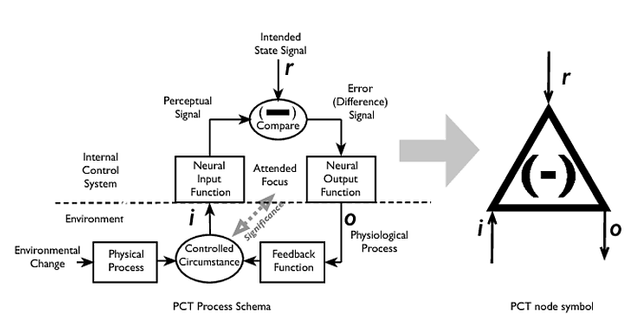
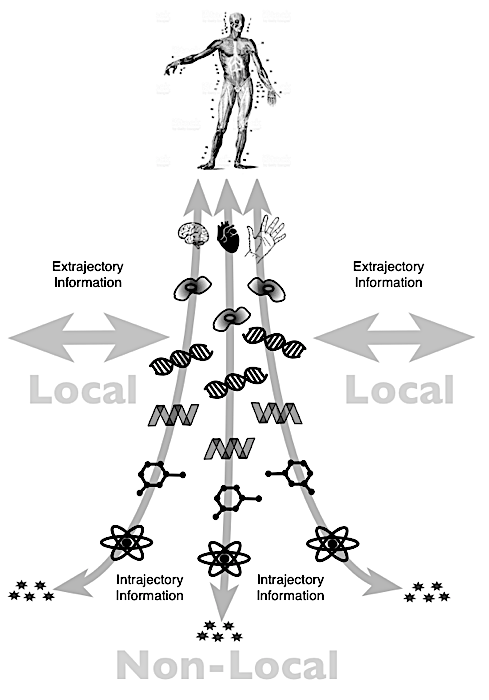
This organic “one world” of personal experience arises holistically across many levels of organized occurrence where dynamic entities interact in concert. And we people transact with one another to create social groups that interact through economic and political accords to generate institutions and supra-social entities like nations and leagues of nations. This organic “one world” thereby traces its multilevel evolution through even tumultuous changes recorded in cultural media as well as by personal memory. It presents, cosmically, a world in which philosopher Ernst Cassirer maintains that the basic task for each individual, as organism, is to make sense of the senses.
This one organic world is wholly actual. This is to say that jointly and actively, experience is both spiritual and physical! It simultaneously manifests both aspects — the spiritually ideal, along with the physically material — each of which seems mysteriously to underlie and facilitate the other! And the crucial implication is that its asserted “one wayness” is the way of attentiveness. What you experience is guided by how you pay attention to your own circumstances.
World religions and civic codes typically have agreed on two propositions: namely, that one should
-
with all one’s being, participate in — love — Divinity, and
-
treat others as one would be treated by others.
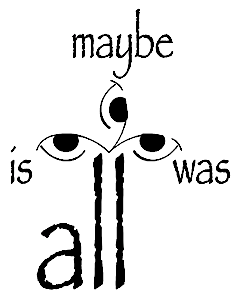
The Role of Attentiveness
According to comic philosopher Reggie Watts, “If you pay attention, the world is an amazing place. If you don’t, then it’s whatever you think it is!”
You are in charge. You are the world-keeper for yourself. Your cultural world, which helped form you (in society with other individuals) you also now help to shape. Your own creative (or destructive?) endeavors are communicated. They affect the experiences of others. Ultimately, accomplishments (or detriments?) ripple outward; everyone affects everyone.
Where we may socially mold shared patterns and rhythms, there also we find common culture. But each person, tutored and shaped by his or her own cultural moments, is individually and irreducibly unique in spirit. Soul is that uniqueness of experience. There is nothing “otherworldly” about it. Divinity resides in each personal moment, along with, and in concert with, physically pragmatic necessity.
Philosophies Reconstrued
This modern organic view first was systematically espoused in the process-relational philosophy of Alfred North Whitehead. It has been further elaborated by a number of other contemporary philosophers, such as Charles Hartshorne, who extends and elaborates such ideas to espouse a cosmic metaphysics of triune Divinity. That three-natured Divinity is author of eternal truths that never change (beauty, ethics, mathematics, and so on), which Hartshorne characterizes as being of the Original Nature of God. Such eternal truth works through evolutional elaboration of new possibilities by means of the Creative Nature of God. Finally, Divinity manifests in ongoing actuality, in experiences of entities manifesting as cats, dogs, humans, and so on, in the Consequent Nature of God. In the words of Grasshopper, “All that is, or was or ever may be.”
[For the philosophically innocent, C. Robert Mesle skillfully relates Whitehead’s ideas to ordinary experiences in his book Process Relational Philosophy. But I think the best, if more rigorous, introduction to these views is not in Whitehead’s own originally published academic lectures (1929), but in Donald Sherburne’s A Key To Whitehead’s Process and Relation (1966). Sherburne faithfully restructures and delivers Whitehead’s original words, but gathers them into tutorial presentation for more effective assimilation by newcomers. He contributes, as well, his own incisive commentary that runs in parallel to Whitehead’s articulation of propositions and arguments. For a satisfying taste of Hartshorne’s take on the spiritual (metaphysical) character of the cosmos, try his Creative Experiencing: A Philosophy of Freedom (2012)]
Meaningfulness of Perception / Perception of Meaningfulness
Within individual experience, perception is actual, as well as latently significant. Said another way, signals are actual; their significance is virtual, about relationships. To the extent that a moment of sensory activation resonates with remembered informational traces, forms, of earlier moments, there is associative relationship within which it may be said that one form suggests, or represents, the others. Such is the nature of a sign: it represents other entities or experiences that are “like it”.
Such immediacy of association, within any given sensory perception itself, is intrinsically iconic. (Iconic: a sign that is similar to what it represents.) Any physiological pattern of sensation is similar to those sensory memories with which it resonates. Any one can evoke, or “stand for”, all other associated ones, because they are perceptually similar.
Iconic affinities are intrinsic to imaginal consideration of memories. Such affinities assess likelihoods among any prospect of actual possibilities. Attentive moments, or at least their momentary sensory patterns, are equally fraught with signification, i. e., with virtual, relational content. And that signification extends to the “stuff” intuited in actual physical manifestation. Signification inheres in the nature of associative memory; without it attentiveness could mirror no intention or purpose.
But degree of affinity within such association may vary widely. Some iconic relations are so strong as to be virtually identical — twins, for instance. Others are more vague and general, as with “legs”, the sense of which may be triggered by any extensive projections or segments, whether capable of walking about, or not. For instance, compare the “legs” of a dog with those of a table, or of a journey.
Flavors of Meaningfulness
Beyond iconic representation, significant reference also may be occasioned in either consequential or indexical relations, as with Pavlov’s dogs, for whom bells came consequentially to represent feeding time. Or when a pen metonymically represents a power mightier than that of any sword. (A metonym is a statement in which a part stands for a whole: The power of the pen to persuade is said to be mightier than the power of the sword to coerce.)
Charles Sanders Peirce denoted three types of sign: iconic, indexical and symbolic. (Note that Peirce’s use of the word “symbol” to mean “conventional or arbitrary sign” is the converse of Carl Jung’s usage, for whom a symbol was intimately related to the nature of what it represents. These contrary implications have occasioned much confusion among theorists and practitioners alike.)
Sensations provide the only information we have concerning events among circumstances beyond our immediate grasp. The very fact of perception itself carries a significant charge: it represents what incites a perceptual moment. This significant charge is the information given in the perception.
At its most elemental that charge, that significance, constitutes a relation between a perceptual form and the actuality of its instantiation. It is the most basic vector of experiential information — a one-dimensional, i. e., linear, associative relation.
Actions are Effects
Such vectors also are capable of representing more objectively actual relations, such as a perceived or imagined target of some action. Linear actions and relationships are the basic constituents of individual M1 attentiveness. Among earliest primate groups, sequences of M1 moments dominate activity patterns that are emulated, learned and passed along to others, largely through vocalization, gesture and mimicry.
Linear vectors of significant behavior may be simple, or they can be chained together in long articulations of steps, such as performing a task. And tasks, themselves, may be combined into conditionally branched sequences that facilitate more complex projects, especially those in which multiple individuals cooperate. M1 patterns become socialized, through communication across groups, into C1 pragmatic paradigms of nomadic and other linear cultures.
At their most basic, M1 patterns are simply patterns of direct action or relationship. Those linear informational patterns, as memes, of course, still live on in linear relations and actions of our higher-order cultural modes. Everyone, everywhere, no matter the cultural mode they inhabit, does things one step at a time, in sequence, at M1, whether fully attentive, or not. And every project manager in every C4 industrial and corporate setting is responsible for monitoring and maneuvering the myriads of separate task chains that make up even the most complex of projects.
[It should be noted that our culture unfortunately tends to regard lower level paradigms as somehow inferior. To do so is inappropriate. The criterion of superiority should appeal to organic harmony of consequences and outcomes. Lower order paradigms are quite capable of consonant affiliation and affinity within their own natural and spiritual circumstance. Whatever the complexity of a paradigm, its ultimate effect is experienced by all as either an intrinsic unity, or lack thereof. It is we modern “civilizers” who have disturbed countless Original Paradises so nostalgically recalled in our fantasies of simpler, yet somehow fully conversant lives.]
Actions Also are Agencies
In cultural activity modes, each higher order type of activity incorporates all lower ones within a holarchy of constituent agency:
-
C0: Contemplative, by intuitive knowing
-
C1: Relative, by attentively associating
-
C2: Directive, by authoritative driving
-
C3: Competitive, by characteristic valuing
-
C4: Functional, by causally inciting
-
C5: Responsive, by organically inspiring
Perceptual Elaboration
During personal cognition, elemental forms of perception combine with related memories to construct (construe) more complex elaborations of implied possibilities. (See Elaboration of PCT Levels and Manifest Orders, as well as Comparison of Hierarchical PCT Levels, below.) These more complex constructs , stacked levels of PCT/imaginal feedback, include all lesser complexes as constituent moments. Such cognitive process hierarchically builds into a nested holarchy of ever more adequate perceptual/attentive construction. (Compare with physicist F. David Peat’s concept of gentle action, which has been compared with the mode of Wu Wei.)
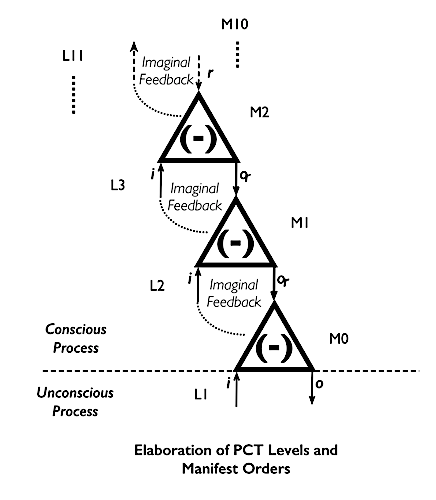
Manifest Orders derive from the underlying implicate of vitality itself, unconscious processes, at M0. Up to the most abstruse of conceptual implication, I count eleven such levels, or dimensional potentials for elaboration (construction). Each level presents some cognitive context for an attentive moment, the simplest being “linear“ association between two M0 “point” instances. The next higher is an organized “planar” collection of instances of linear association. And so on. Each next level up is just an organizing collection of multiple instances of the next simpler.
I designate each by M (for “manifest”) plus an integer, to represent its respective informational density, i. e., complexity of its constructions: M1 is built of M0s. M2 is built of M1s (each of which conveys its own constituent set of M0s). M3 organizes out of gatherings of M2s (formed of M1s bearing M0s), and so on. The orders holarchically proceed up to M10, which is the most complex (that I can imagine!). M10 I project to be some sort of Shared Pluripotence, a wisdom, perhaps akin to that expressed among the Grasshopper band, mentioned above, just beyond universally valid constructs at M9.
Engineering the Next Paradigm
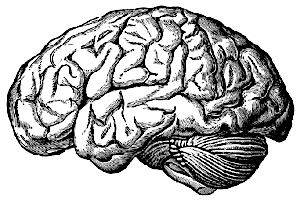
[To gain a sense of how such a model might function in the actual neural networks that afford cognition, consult Chris Eliasmith’s How to Build a Brain. A more complete treatment is given in his subsequent book.]
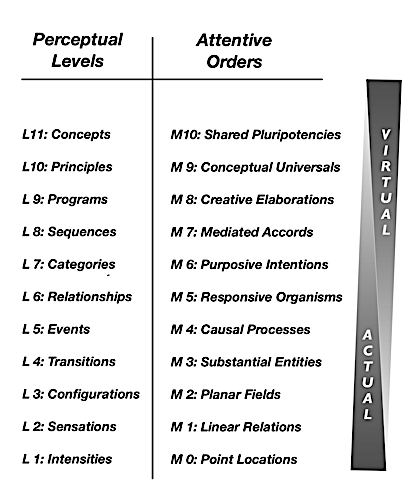
Comparison of Hierarchical PCT Levels and Manifest Orders: Dimensions of Attentiveness
While developed independently, the upward cascade of Manifest Orders seems to correspond well with levels of perceptual complexity given in William Powers’s later extension of his original PCT formulation into a Hierarchical Perceptual Control Theory (HPCT).
[An exceptionally useful and succinct synopsis of Powers’s ideas is available in a web posting by Bruce Abbott. Of course, the original source is Powers’s 1973 book, Behavior: The Control of Perception.] HPCT levels convey an ascending scale of dynamic complexity given in sensory control function, while Manifest Orders expound a parallel holarchic scale of informational complexity among significant, i. e., construed, imaginal relationships that provide the reference signal to each level.
Surely There is More … .
Lest this functional sketch seem just too basic to account for all the bizarre and curious exploits among members of the human race, realize that it merely points toward a core idea. Different circumstances, as perceived by any particular individual, will quickly adapt the core PCT organic schema to their variously imaginal particulars.
For instance, a person who is perfectly content and has no pressing concerns typically dozes off or simply stays put for the moment, perhaps in meditation. But if they become bored, then they have ceased to be content. Their abiding interests and proclivities likely will spark some compensating intent to drive new behavior within their own perceived circumstances, toward some intended goal. But still, at each moment, they act to control their perception of their own circumstances. And they subsequently behave to bring those circumstances into alignment with their intended purpose. Actual behavior is a consequence of controlling perception within particulars of a circumstance to attain or sustain some intent.
Recall that socioculturally, behavior is driven by compensating redress of perceived deficiencies, coupled with eagerness to repay grief in kind and with interest.
And therein lies seed of the tumultuous history of humankind. What lies beyond is up to us. We each enact our own proclivities within our local human neighborhood of Consequent Nature.
The next Steemit post will look more closely at M1 and derived C1 orders of sociocultural experience and see how memes of those orders today still play, interact and sometimes disrupt prospects within individual lives and human societies.
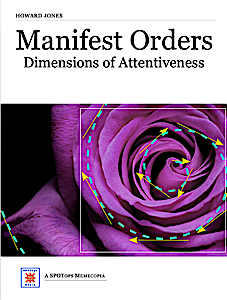
lol this is the longest post I have seen so far :). Was the book published? If yes when and where? Thanks
Thanks for asking. O, Wow is available in paperback here and here; and as an ebook here.
Manifest Orders is a project still in progress, which these blog posts relate to. Its current state can be freely downloaded from its website.
Yes, this is a long post. Too long for the Steemit editor, it seems, which unfortunately committed it to the blockchain way before I had finished editing. I have since placed this essay, now divided into two sections and reorganized for better clarity, on the Manifest Orders website.
I find the Steemit editor to be unwieldy and too unforgiving. In the future I shall place any long essay on the Manifest Orders site, under Related Matters, with its linked synopsis posted here on my Steemit blog.
Hello & Cheers!! I'm a content detection and information bot. You are receiving this reply because a short link or links have been detected in your post/comment. The purpose of this message is to inform your readers and yourself about the use of and dangers of short links.
To the readers of the post: Short links are provided by url shortening services. The short links they provide can be useful in some cases. Generally their use is benign. But as with all useful tools there are dangers. Short links can be used to hide all sorts of things. Quite frequently they are used to hide referral links for instance. While not dangerous this can be deceptive. They can also be used to hide dangerous links such as links to phishing sites, sites loaded with malware, scam sites, etc. You should always be extremely cautious before clicking on one. If you don't know and trust the poster don't click. Even if you do you should still be cautious and wary of any site you are sent to. It's always better to visit the site directly and not through a short link.
To the author of the post: While short links may be useful on some sites they are not needed on steemit. You can use markdown to format your links such as this link to steemit. It's as simple as
[steemit](https://steemit.com)Unlike short links this allows the reader to see where they are going by simply hovering over the link before they click on it.I removed the "short links" and replaced them with the full ones. How do I make these bot notices disappear?
They don't disappear. Nothing disappears once on the blockchain. They are harmless informational messages. Replying to them like you did that you have changed the links is the correct thing to do.
Hello & Cheers!! I'm a content detection and information bot. You are receiving this reply because a short link or links have been detected in your post/comment. The purpose of this message is to inform your readers and yourself about the use of and dangers of short links.
To the readers of the post: Short links are provided by url shortening services. The short links they provide can be useful in some cases. Generally their use is benign. But as with all useful tools there are dangers. Short links can be used to hide all sorts of things. Quite frequently they are used to hide referral links for instance. While not dangerous this can be deceptive. They can also be used to hide dangerous links such as links to phishing sites, sites loaded with malware, scam sites, etc. You should always be extremely cautious before clicking on one. If you don't know and trust the poster don't click. Even if you do you should still be cautious and wary of any site you are sent to. It's always better to visit the site directly and not through a short link.
To the author of the post: While short links may be useful on some sites they are not needed on steemit. You can use markdown to format your links such as this link to steemit. It's as simple as
[steemit](https://steemit.com)Unlike short links this allows the reader to see where they are going by simply hovering over the link before they click on it.I have removed the two short links, replacing them with the full links. Why doesn't the "short link" notice disappear?